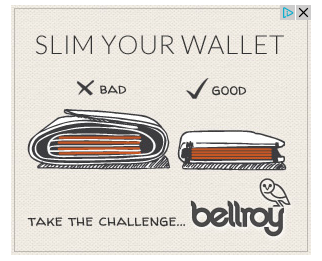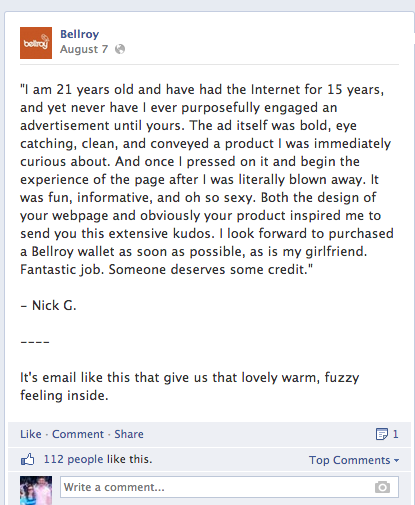
Digital Marketing Trends
Wednesday October 9th, 2013The industry of digital marketing is always advancing, making it highly challenging to keep up with digital marketing trends. With the advantage of youth and optimism on my side, I take a stab at labeling some current trends, as well as predict where I think this industry is going.
From the first banner ad via Hotwired in 1996 to the darkest of black hat SEO tricks, the art of digital marketing has gone for a wild ride. Identifying current digital marketing trends and predicting the future of this wild industry can be nearly impossible. However, having the advantage of youth and optimism, I am able to take a stab at what I think the digital marketing trends are today and where this fascinating industry is going.
Bottom Line Dollars. Not Impressions.
Over the last decade, the industry of digital marketing has advanced so fast that inefficient practices have become standard. At the heart of these practices are metrics like impressions and page views. Online media outlets have taken advantage of these dated reporting methods and have “optimized” their pages to elevate these statistics (annoying slideshows and unnecessarily paginated articles). Instead, digital marketers should start acting like marketers and report on business figures, rather than irrelevant online metrics.
Before an accurate metric can be selected, the marketing goal must first be identified, whether it’s brand awareness or lead generation.
A lead generation goal is simple to report on with today’s analytics. Ecommerce tracking can identify ROI for most B2C clients, while conversion points, event tracking and some basic conversion percentage math can identify a useful cost per acquisition metric for B2B clients.
Brand awareness is a trickier goal to report on and the most common point where digital marketers state their “digital mindset” and stick to impressions. My favorite method for reporting awareness is accomplished through custom reporting in Google Analytics. A custom dashboard can be created using a standard geomap with “visitors by city” as the metric, filtered to only show organic, branded keywords. When comparing two time ranges, the result is the change in searches for the brand over time. The change in searches for brand specific terminology equals the change in brand awareness over time (this method will soon no longer function due to 100% of keyword data going not provided).
Digital Marketer. Not Guru, Ninja or Wizard.
The industry of digital marketing has been rather… creative with developing titles. Guru, Ninja and Wizard have all been overused and, quite often, go hand-in-hand with a particular facet of digital marketing, such as SEO Guru or PPC Ninja. This creates a segmented industry. The trend of ditching the flashy titles is starting to catch on as the industry becomes more documented and less comparable to magic or witchcraft.
Documenting the industry and sharing information has resulted in an additional perk beyond the trend of disappearing, cheesy titles. This share-happy industry has become much more cohesive, allowing inbound and outbound marketers to work together, rather than against each other. Search engine optimizers, pay per click specialists, and community managers are becoming known as digital marketers, and joining forces.
Cohesive Campaigns Featuring the Big Idea
As the digital marketing industry trends toward a cohesive, collaborative structure, the clients of digital marketers are as well. With more responsibilities and decision making existing under one roof, campaign launches are able to happen much quicker. With this new found time, agencies are able to invest more into thinking outside the box, developing creative and ensuring all elements are in place for a strategic launch. This is leading to a resurgence in an old concept in advertising: the big idea, or the creative inspiration that is the core of integrated marketing campaigns.
A great example of this is a campaign underway from Bellroy, an Australian wallet maker. Their big idea is “Slim Your Wallet.” They use the combination of search ads, display ads and social ads to gain the attention of their target audience.
Once they have the attention of the target audience, they corral them to one of four landing pages (1, 2, 3, 4) built with content marketing in mind (likely using A/B testing to hone in the ideal landing page). The landing page teaches the user different ways they can make their current wallet thinner. Once the user progresses through the steps going down the page, they are finally met with Bellroy’s products at the bottom. Users can choose between how they like to carry their money and look at wallets that fit their needs. When a preferable design is selected, the user is guided to a high quality product page married with a highly polished stop-motion video to show exactly what can fit in the wallet and how it looks.
What if the user doesn’t buy the product just yet? You can be sure they will be followed around the Internet with remarketing guiding them back to the wallets they were most interested in and on social networks, encouraging them to interact further with the brand (where the theme of “Slim Your Wallet” is further reinforced: http://www.facebook.com/carryBellroy).
Effective? I believe this user email that Bellroy posted on their Facebook Wall says it all:
I can’t speak for the Ninjas or the Gurus out there, but as a young digital marketer, this trend is one I am excited for!
Programmatic Ad Buying Reshaping the TV Ad Buy.
The last trend I see, which isn’t as much as a trend as it is a direction for the future, is programmatic advertising becoming popular in traditional advertising outlets such as billboards, tv and radio. Advanced algorithms, integrated with user data, will have the ability to drastically increase efficiencies in audience targeting. Corrupt media planners who have had their loyalty purchased by media sales teams will be restricted to cost based decision making driven by supply vs demand, rather than the perk-based decision making of the current system.
In addition, programmatic ad buying means that traditional mediums can be included in digital media campaigns, streamlining the ability to create a fully integrated marketing campaign, resting on the big idea at its core.
I understand that this “trend” won’t happen tomorrow, next week or next year. But with the growth and development in programmatic advertising under way, we are trending toward a programmatic model as a standard. When that day happens, maybe digital marketers of today will even drop the digital in front of their title, and we’ll all just be marketers again.




